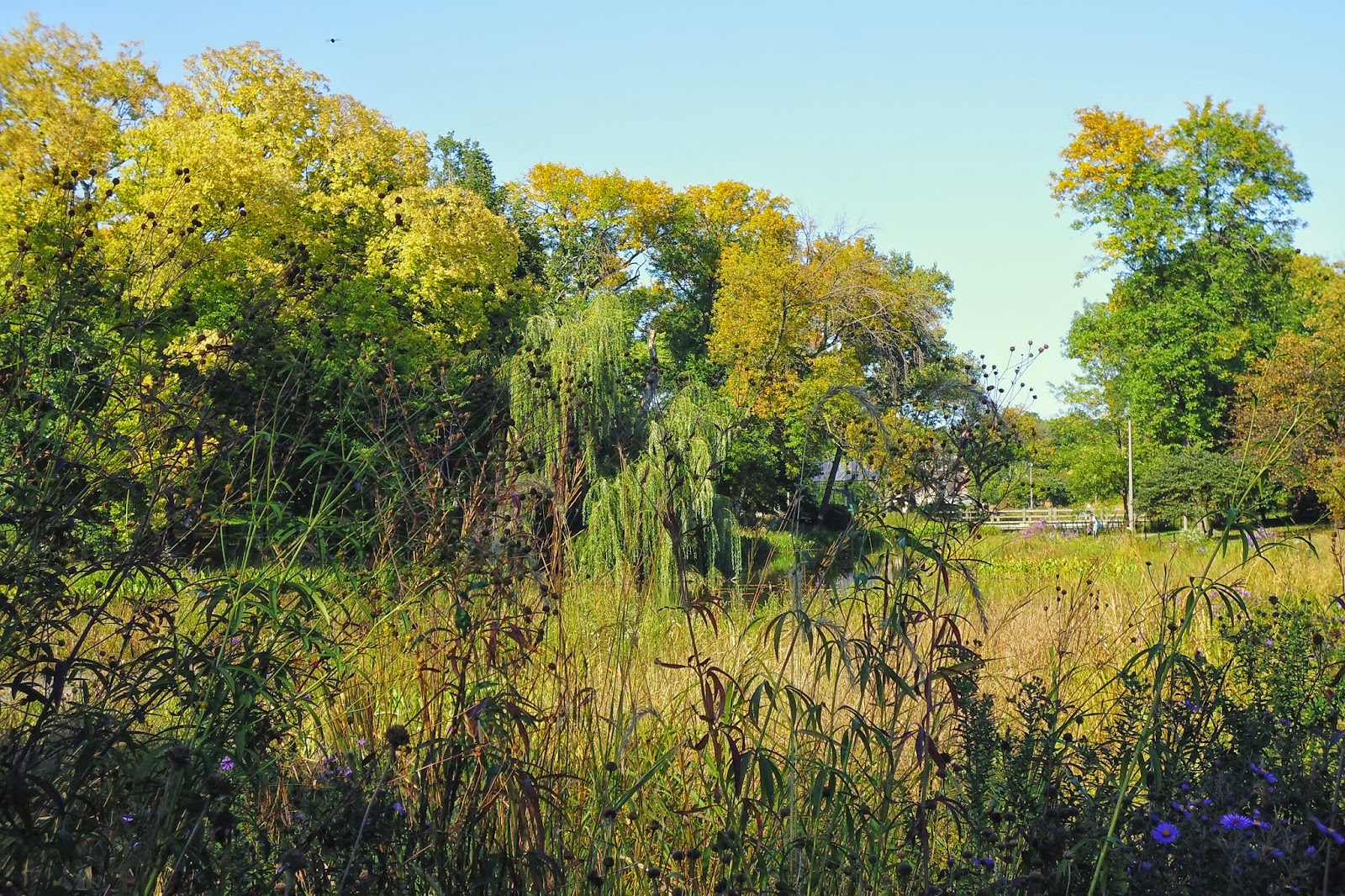I arrived early to a job interview on Friday (yes, it's been six months since I've returned from Honduras and I'm still job searching) and while the trees were bursting with oranges and reds, the weather spoke more of summer. The place where I was interviewing was located on the outskirts of Humboldt Park, a 207 acre park in West Chicago. I've ridden my bike through it before and driven through on my way to Logan Square but never spent much time sitting in its grasses, walking through the pathways.
I have lived in Chicago for four years and am not well versed in urban planning but I have seen the city develop and transform since I first came. Logan Square, an area where I spent plenty of time during college, went from being largely Hispanic to now, not as much. It's now the site for Chicago's version of the High Line, also Chicago's first urban orchard. An old market and bazaar selling cheap goods was recently sold and is now part of a $100 million dollar development plan for apartments and grocery stores. Neighborhoods change quickly in a city; not always for the better but not always for the worse either and yes, grocery stores do seem like a good idea.
I can see that Humboldt Park, on the outskirts of Logan Square, is on the cusp, beginning to develop in the same way. The large park that sits in the middle of the neighborhood is filled with flower gardens, a lagoon, soccer fields, domino tables, an art gallery, prairies and food trucks (selling nothing artisanal; just fried chicken under heat lamps). Realistically this makes the neighborhood ripe and appealing for the young, urban dwelling upper class. But it's also impressive as it is now, especially after reading Jane Jacobs this summer and realizing just how hard it is to make successful, diversified parks in lower income neighborhoods; parks that act as an asset to a community rather than an empty spot that depresses and further emphasizes danger (example, here).
I like the idea of urban orchards but I also want cultural diversity too so I have no hard stance on the matter. I just find hope in the steel structures on the Paseo Boricua, the two Puerto Rican flags that were erected on both ends of the neighborhood's main street meant to showcase the neighborhood's pride and cement it into the ground.










